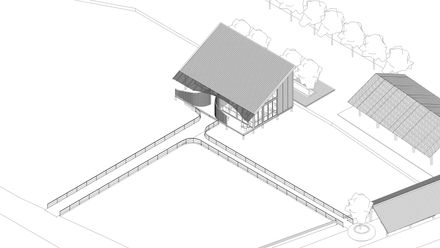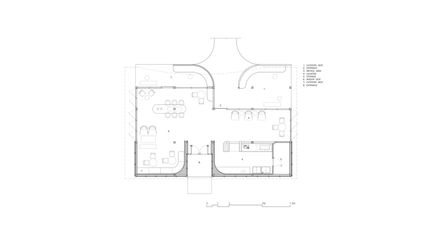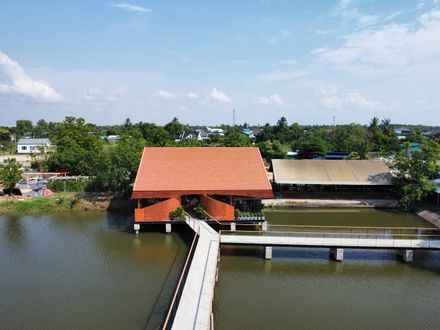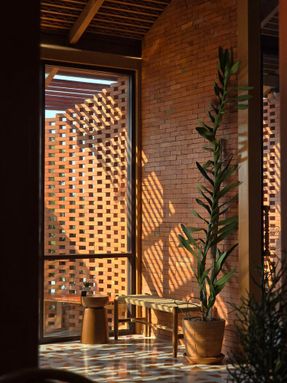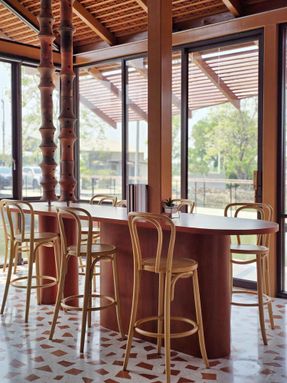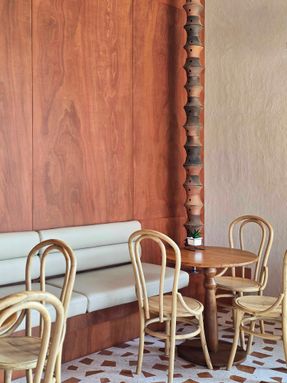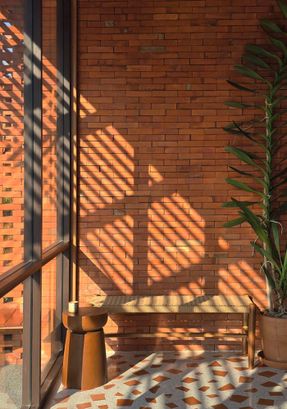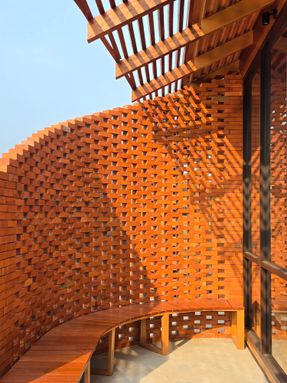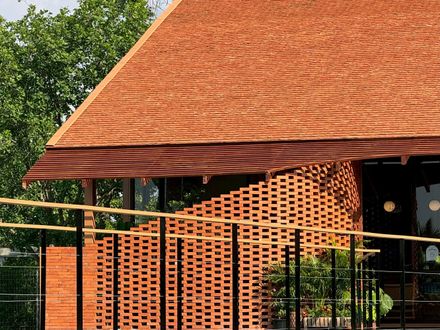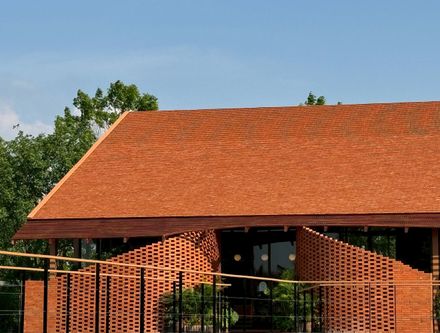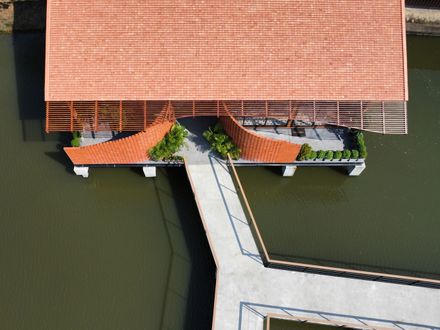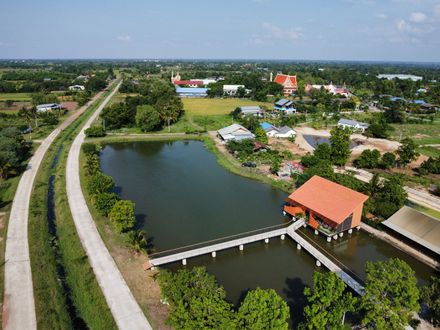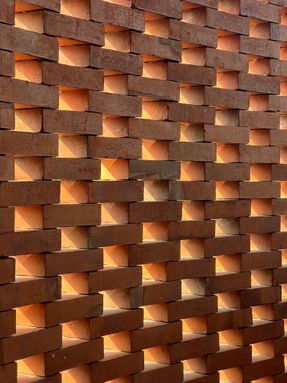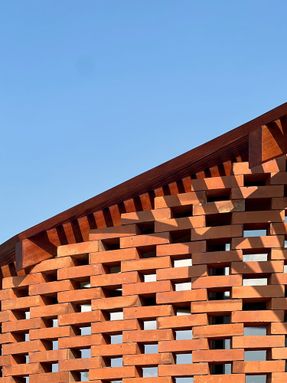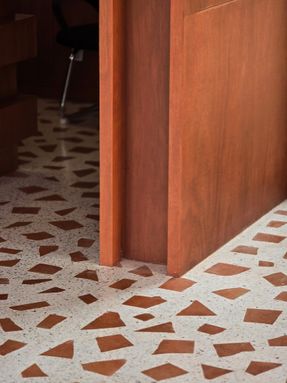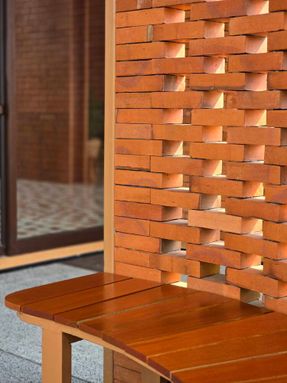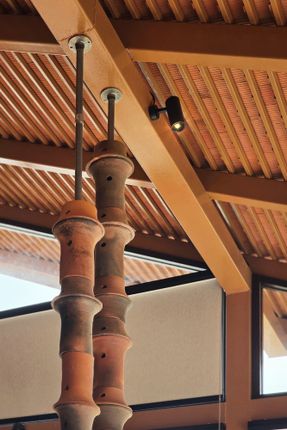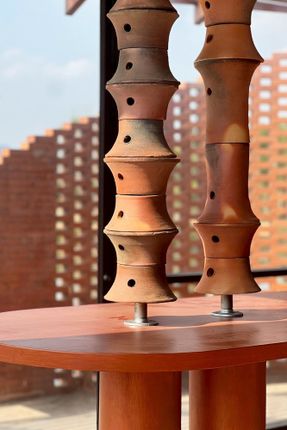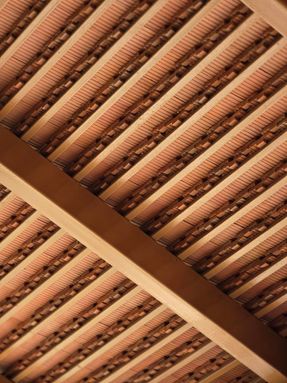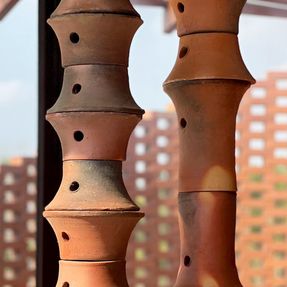ARCHITECTS
Studio Bewell
LEAD ARCHITECT
Nattarapong Pitaktanin, Wannaleela Choosakun
LEAD TEAM
Wannaleela Choosakun
PHOTOGRAPHS
Koraphin Oantaralok, Atiroj Thongsen
AREA
153 m²
YEAR
2025
LOCATION
Nai Mueang, Thailand
CATEGORY
Hospitality Architecture, Coffee Shop Interiors
English description provided by the architects.
This café, set gently over a body of water, draws from the rich local craftsmanship of Korat and materials sourced from the Dan Kwian village, an area famed for its traditional pottery.
The project reinterprets these elements in a contemporary language, responding to the design brief, which called for a water-based structure that complements the existing context of "Chai Thung Restaurant", a local restaurant by the pond.
The café was envisioned as an additional zone to accommodate customers while maintaining the ambiance of the original space.
With a focus on using locally available materials and reflecting the wisdom of Korat artisans, Dan Kwian's signature terracotta emerged as the key material endorsed by both the client and the designer.
The natural bronze-like tones, ranging from reddish-brown to black, come from high-temperature firing without any added pigment.
These tones formed the café's primary palette.
Terracotta tiles were applied across multiple architectural elements, roof and flooring alike.
The signature cut-edge roof tiles were installed at a new angle, subtly reflecting the geometry of the restaurant's original roof.
Solid red bricks were playfully arranged along a curving entryway, inspired by traditional pottery forms.
This approach helps scale down the structure, making it feel more welcoming, while still preserving a sense of openness and connection to the outdoors.
The café's white terrazzo floor features fragments of grade B terracotta tiles leftover stock from local factories.
These were broken, reorganized, and patterned by local craftsmen, introducing a playful and tactile detail to the interior.
One of the most striking elements is the use of "jor" (saggars), curved ceramic containers unfamiliar to the public but essential in the Dan Kwian firing process.
These vessels serve as supports for other pottery pieces in the kiln, acting as the unseen 'furniture' of the firing chamber.
Reimagined here as sculptural installations, the jor not only add visual intrigue but also quietly narrate the behind-the-scenes story of the region's craft production arguably more eloquently than any other ceramic form.
